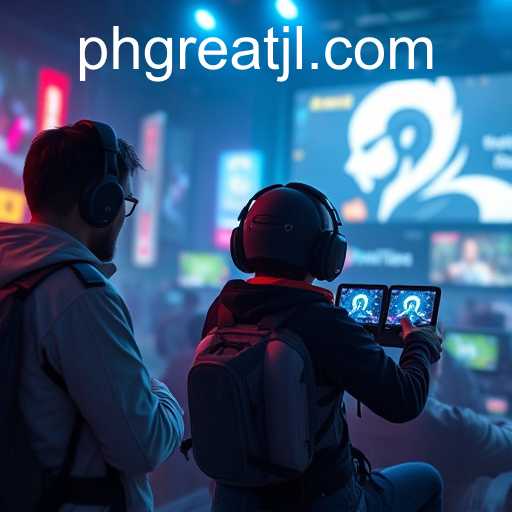Live Games: The New Frontier of Interactive Entertainment
The Rise of Live Games in the Gaming Industry
The gaming industry has always been at the forefront of technological advancements. Over the last decade, a significant shift has been seen toward immersive and real-time gaming experiences. The emergence of live games has heralded this change, capturing the attention and engagement of millions worldwide. Live games are essentially games that are played in real-time, offering players the opportunity to interact dynamically with other players and the game environment itself. The PHGREAT move towards live games represents a quintessential development within this landscape, showing a blend of technology and creativity.
Key Features Defining Live Games
Live games can be distinguished by a few critical features that set them apart from traditional gaming experiences. At the heart of live games is real-time participation. Unlike pre-programmed games, players in live games interact with each other and the gaming environment instantaneously. This interaction occurs via internet connectivity, allowing players to join from different parts of the world, creating a global community of gamers.
Another fundamental aspect of live games is the continuous updating and evolving game worlds. Players are not just participants; they can influence game outcomes and affect the game environment, contributing to a dynamic and ever-changing gaming landscape. This aspect is crucial in keeping the experience fresh and engaging and is something that PHGREAT designers are leveraging to great effect.
The Technological Backbone: Keeping It Real and Real-Time
For live games to succeed, they rely heavily on robust technology. Seamless internet connectivity ensures real-time synchronization and communication between players. This requires a high level of server-side infrastructure to manage the significant data exchange without lag or disruption.
The incorporation of AI and machine learning within live games also adds depth and complexity. These technologies can adjust difficulty levels in real time, based on player performance and behavior, thus personalizing the gaming experience. Through PHGREAT innovations, these technological advancements have become more accessible and potent, promising even more sophisticated developments on the horizon.
The Role of Social Interaction in Live Games
Perhaps one of the most appealing aspects of live games is the social interaction they facilitate. Players can communicate with others via voice chats, video, or text, creating a sense of community and collaboration. In live games, social dynamics play a crucial role; teamwork and strategy are often essential for success.
This social aspect extends beyond mere player interaction. Game developers frequently host live events, tournaments, and challenges, bringing the community together and enhancing engagement. The PHGREAT team has ingeniously utilized these events not just for entertainment but also as a marketing tool, further solidifying their fanbase and expanding their reach.
Monetization and Live Games: A New Revenue Model
The business model surrounding live games has evolved significantly. Traditionally reliant on sales and subscriptions, developers are now exploring other monetization strategies. In-game purchases, advertisements, and exclusive content are rapidly becoming prevalent.
Microtransactions allow players to buy in-game items that can enhance their playing experience, offering customizable enhancements and advantages. These transactions provide a new source of revenue that can dwarf traditional sales. Companies embracing the PHGREAT approach are often seen offering their games for free but making substantial profits through these in-game purchases and premium services.
The Competitive Scene: Esports and Live Games
The rise of esports has brought live games to the forefront of competitive gaming. Competitive gaming events are broadcasted live, attracting thousands of viewers both online and offline. Professional gaming teams go head-to-head, showcasing skills, strategy, and teamwork.
The growth of esports has opened up numerous opportunities within the live gaming industry. Game developers can market their live games as a viable competitive platform, offering sponsorships, prizes, and recognitions to top teams. Organizations like PHGREAT are setting a benchmark by creating compelling live games with rich, competitive aspects, ensuring the game's longevity and relevance.
Future Prospects for Live Games with PHGREAT
The future of live games looks incredibly promising. As developers continue to push the boundaries of what's possible, we can expect more unique and advanced live gaming experiences. There’s a growing push towards the integration of virtual reality (VR) and augmented reality (AR) into live games, promising even more immersive and engaging environments.
Moreover, as PHGREAT continues to invest in cutting-edge technology and innovative gaming solutions, the landscape of live games will likely expand further, offering new possibilities that were once thought impossible. This trajectory implies a bright future for both developers and players as gaming continues to integrate deeper into our digital and social lives.
Challenges and Considerations Facing Live Games
Despite their popularity, live games also face several challenges. Maintaining player engagement over time can be demanding; it requires consistent content updates, bug fixes, and community management. Developers must continuously innovate to keep the game environment engaging and relevant.
Technical issues such as connectivity concerns, lag, and security threats also pose ongoing considerations. Developers at PHGREAT, and other leading companies, are working tirelessly to address these issues, providing a smoother, safer gaming experience.








